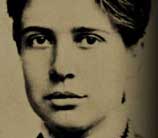 click on image to view photo details
click on image to view photo details
Extraordinary and dramatic circumstances of homicide, such as these, offer an opportunity for investigation into original source materials. Did the newspapers of the day offer an explanation for these events? Was the homicide sparked by police corruption, or related to another incident of interracial conflict?
Who was George Ahoy, the Chief of Police? And where is Margan Park, or is it Morgan Park? This illustrates the ‘errors’ and contradictions in these records which were purposely not ‘corrected’ during the transposition of the handwritten records. Is there a record of the proceedings before the coroner’s jury, either in the coroner’s files or in a newspaper report published after the coroner’s jury? Wiley was sentenced to hang on March 25, 1904. Was there a report of that judgment? Did he actually hang? Was there an appeal? Does the Illinois Supreme Court have any records of this case? What about Mrs. Harriet Payne, guilty of manslaughter? Who was she and what was her role?
The contemporaneous newspapers would be the first place to start, beginning with the days after the crime. There might be an obituary of George Ahoy in one of the English language papers. The Chicago Tribune, as well as a number of other English language papers would have been published during this period.
In addition to the many English language papers published in Chicago, there were some 80 foreign language papers published in Chicago during this period, and they were said to reach an audience of more than 1 million readers.
Both the Illinois State Archives, and the Cook County Coroner’s records might have additional information about this case.
Cook County Coroner’s Inquest Records, 1872- 1911, Illinois Regional Archives Depository Northeastern Illinois University, Chicago, Illinois. These public records, which contain the verdict of the coroner’s jury, the names of the jurors, the witnesses’ names and occupations, are available on microfilm at the depository. The records are indexed by the name of the deceased and date of death. The Illinois Regional Archives Depository at Northeastern Illinois University lists the available corner’s records as: Coroner’s Inquest Records 1872-1911, 52 reels of microfilm: “Records shows the date and location of the coroner’s inquest; the name, residence, and occupation of the deceased; the names of the jurors; the names, residences, and occupations of the witnesses; the testimony of the witnesses about the circumstances of the death; a description of the deceased; the jury’s verdict on the cause of death; and acknowledgment by the coroner.”
Illinois State Archives, Norton Building, Capital Complex, Springfield Il. 62756, tel: (217) 782-4582, fax: (217) 524-3930. The records in the Illinois State Archives includes birth and death certificates, Cook County Coroner’s Inquest Record Index, 1872-1911, Supreme Court Reports, and many other official reports, legal records and data sources, including a microfilm copy of the original handwritten records of this data set, and many other rich historical resources.
For further reading: The following research institutions also have some original newspaper records from this period, court records, and other original documents, such as family archives and collections of private papers:
Chicago History Museum 1601 N. Clark St. Chicago, IL 60614 Phone (312) 642-4600 Fax (312) 266-2077
Chicago Public Library 400 S. State St. Chicago, IL 60605 Archives Dept. Phone (312) 747-1941 Special Collections Dept. Phone (312) 747-4740 Fax (312) 747-4077
Newberry Library 60 W. Walton St. Chicago, IL 60610 Phone (312) 943-9090
University of Chicago Library Special Collections Research Center 1100 East 57th St. Chicago, IL 60637 Phone (773) 702-8705 Fax (312) 702-3728
